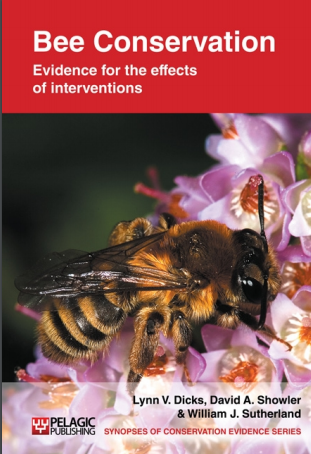Sow uncropped arable field margins with a native wild flower seed mix
-
Overall effectiveness category Awaiting assessment
-
Number of studies: 7
View assessment score
Hide assessment score
How is the evidence assessed?
-
Effectiveness
not assessed -
Certainty
not assessed -
Harms
not assessed
Study locations
Supporting evidence from individual studies
Nine bee species were recorded on three field margin strips sown with a diverse grass and wildflower seed mix established for three years at the ADAS Bridgets Research Centre, Hampshire, England in 1998 (Carreck et al. 1999). The same number of species was recorded on a single naturally regenerated field margin strip in the same study.
Study and other actions testedA small-scale replicated, controlled trial of field margin management options on two farms in North Yorkshire, England in one summer (Meek et al. 2002) found a significantly greater abundance of bumblebees Bombus spp. on four 6 m wide margins sown with a grass and wildflower seed mix than on four naturally regenerated, grass-sown or control cropped margins.
Study and other actions testedIn a replicated controlled three-year trial on three arable field margins at a farm in North Yorkshire, Carvell et al. (2004) found 6 m wide field margin plots sown, or half-sown with a native 'grass and wildflower' seed mix supported significantly more bumblebees than margins sown with tussocky grass, or control cropped field margins. The wildflower-sown margins supported significantly more bumblebees than naturally regenerated margins in the same experiment, in the first year of the study only, and this difference was not significant when data were averaged across all three years. However, the margins sown with wildflower seed mix supported consistently high numbers of bumblebees, whereas the naturally regenerated margins had one bumper year for bumblebees and were poor in the other two years.
Study and other actions testedIn a replicated controlled trial in central and eastern England (Pywell et al. 2005), bumblebee foraging activity and species richness were significantly enhanced at 28 uncropped field margins sown with a 'wildlife seed mixture', compared to paired control sites of conventionally managed cereal or 16 'conservation headlands'. The seed mixture contained grasses, and annual and perennial broad-leaved herbs. This result was dependent upon key forage species being included in the seed mixture, including red clover Trifolium pratense, bird's-foot trefoil Lotus corniculatus and borage Borago officinalis, the latter being of particular importance to short-tongued bumblebee species such as Bombus terrestris and B. lucorum.
Study and other actions testedIn a replicated trial (five plots) of field margin seed mixtures on a farm in North Yorkshire, Carvell et al. (2006) found that both common UK species of long-tongued bumblebee (B. pascuorum and B. hortorum) strongly preferred plots of perennial wildflower seed mix over annually sown agricultural nectar plants (including borage Borago officinalis, fodder radish Raphanus sativus and common melilot Melilotus officinalis), although total bumblebee abundance was highest on the annual agricultural nectar mix. On average 76% of pollen collected by common carder bee B. pascuorum workers sampled in this study was from red clover.
Study and other actions testedIn a replicated controlled trial in thirty-two 10 km grid squares across England (Pywell et al. 2006), there were significantly more bumblebee species and more individuals on field margins sown with a wildflower seed mix (average >3 species and 43 bees/transect) than on grassy margins (average 1.3-1.4 species and 6-8 bees/transect) or cropped margins (average 0.1 species and 0.2 bees/transect).
Study and other actions testedIn a replicated controlled trial at six sites across central and eastern England (Carvell et al. 2007), 6 m margins of cereal fields sown with 21 annual and perennial wild flowers supported significantly more foraging bumblebees (species and individuals) than cropped field margins (including conservation headlands). In years two and three of the study, these seed mixtures also supported more foraging bumblebees (species and individuals) than grassy or naturally regenerated unsown field margins, and in the third year they supported as many bees as a nectar mix based on agricultural legumes. The wildflower mixture took a year to establish properly, but may provide forage for a longer period of the year than the nectar mix. It is also likely to persist for five to 10 years, not declining in flower numbers after three years like the nectar mix.
Study and other actions tested
Where has this evidence come from?
List of journals searched by synopsis
All the journals searched for all synopses
This Action forms part of the Action Synopsis:
Bee Conservation
Bee Conservation - Published 2010
Bee Synopsis





)_2023.JPG)














